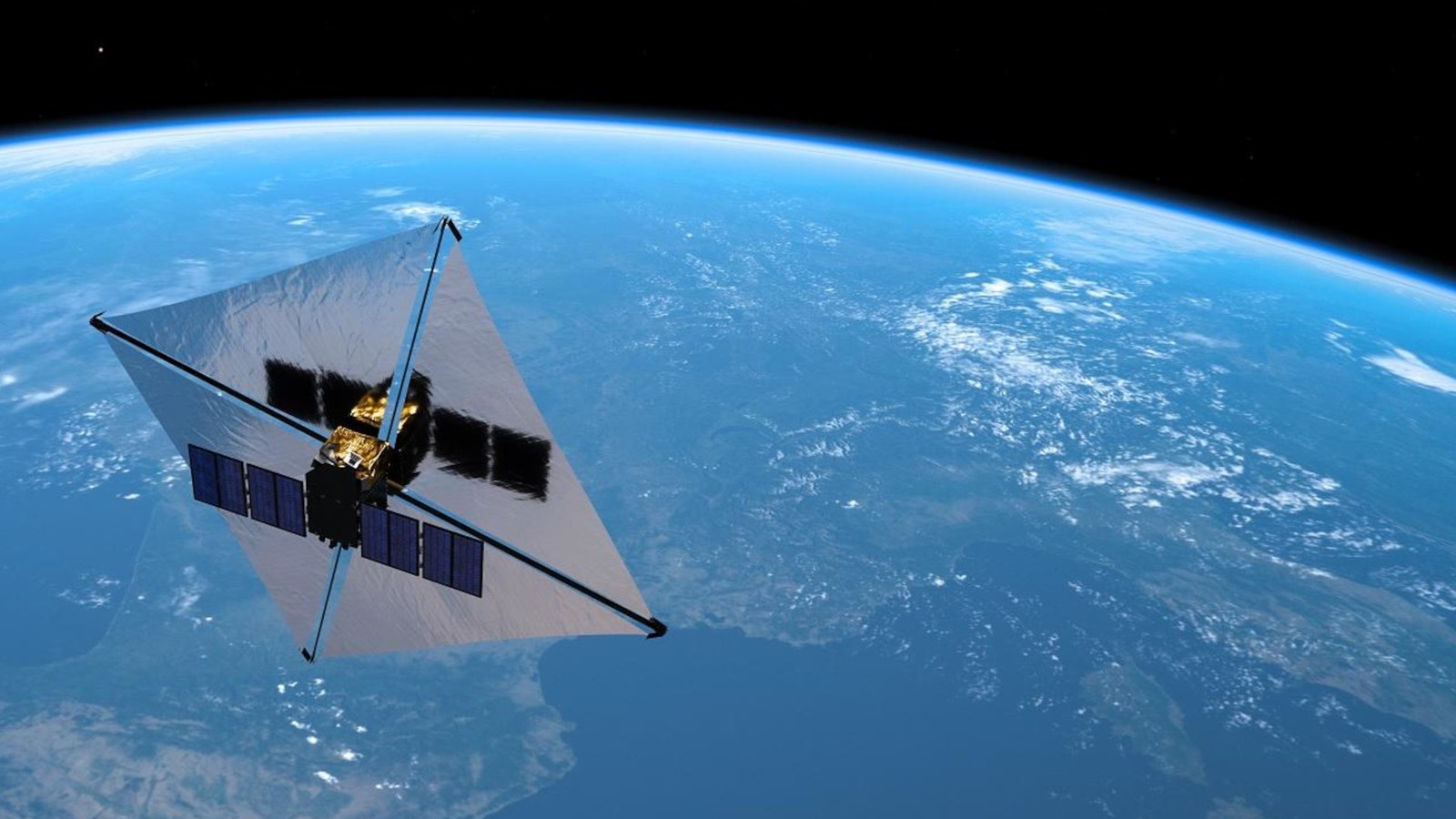Disposal of decommissioned satellites using braking sails

- DLR qualifies ADEO braking sail from HPS for use in space.
- ADEO allows satellites to burn up sooner in Earth's atmosphere.
- Faster deceleration with ultra-light braking sails enables decommissioned satellites to be steered into Earth's atmosphere more quickly and in a resource-efficient manner.
- Additional space debris in low orbits can thus be avoided in future.
- Focus: Spaceflight
Decommissioned satellites in low Earth orbit often remain in those orbits for decades until they finally burn up on re-entry. Braking sails offer the possibility of disposing of these satellites sooner. They can be slowed down so that they enter the denser regions of Earth's atmosphere earlier, where they burn up without leaving any remnants. The German Aerospace Center (Deutsches Zentrum für Luft- und Raumfahrt; DLR) has been researching membrane technologies and ultra-light sail masts for some years. Together with the industrial company HPS, the research results are now being applied in the form of the 'ADEO' braking sail.
Systems expertise for space sails
DLR has been developing braking sails together with the Munich-based company HPS since 2015 as part of various projects funded by the European Space Agency (ESA). DLR has contributed its expertise in the selection, design and qualification of the braking sail membrane. "After many years of collaboration with HPS, the DLR components are now being used in a finished product – that is, also in space, which is what they are intended for," says Patric Seefeldt, Head of the Material Ageing Group at the DLR Institute of Space Systems in Bremen.
The membranes researched by DLR – in particular how they can be folded as compactly as possible and deployed using ultra-light masts – are being combined by the company HPS with appropriate structures and electronic components to form a complete system. "When science and industry work together on a project, something good always happens. We are all space enthusiasts and have a common goal. We want to make our contribution to sustainable spaceflight," says Frank Hoffmann, Head of Dragsail Department at HPS, emphasising the close cooperation with DLR.
Large sail qualified for use in space
In order to bring satellites back from orbit, a sail must function perfectly after being stored in orbit in a stowed configuration for 10 to 20 years. The materials used must be durable under space conditions as well as extremely thin and light. Three sails from previous projects are already in space and two of them have been deployed. The first large ADEO-L sail from HPS is currently being tested at the DLR Institute of Space Systems in Bremen and qualified for use in space. The prototype weighs just a few kilograms, has a packed size similar to that of a shoe box and provides a sail area of 25 square metres. The qualification process included vibration and thermal-vacuum tests. Vibration tests simulate the extreme forces to which a satellite is subjected during launch. In the thermal-vacuum chamber, the sail was partially unfolded several times to demonstrate its functionality under space conditions, for example in a vacuum, in the cold in Earth's shadow as well as at high temperatures in direct sunlight. In the final tests, the sail unfolded perfectly.
Less debris in Earth orbit
Spacecraft in low Earth orbit are subjected to friction from the residual atmosphere. Without orbit corrections, they slowly descend to lower and lower orbits until they re-enter the atmosphere. Braking sails utilise this effect to generate a greater deceleration effect with a larger surface area and thus a significantly faster descent. For the low orbits up to an altitude of approximately 800 kilometres, braking sails can prevent uncontrolled contamination of space by new 'junk' and collision debris in the future. In addition, such sails help to extend the operating lifetime of a satellite. This is because no propellant is required for sail deployment and the subsequent passive descent. In 2024, ADEO-L is also scheduled to embark on a first ESA demonstration mission in space. "We look forward to continuing to work with HPS in the future and to further developing the braking sail. With the current high number of satellites, rapid removal from orbit at the end of their service life is essential," says Patric Seefeldt.

